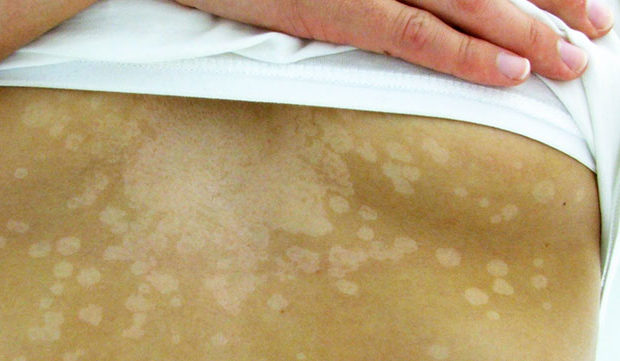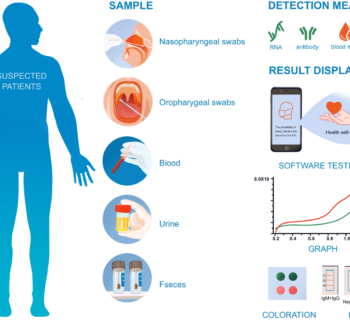Polio, an infectious disease that can cause disability, is usually asymptomatic, which favors its spread and makes vaccination campaigns the only effective control method.
Polio (or simply polio ) is an infectious disease transmitted by a virus ( poliovirus ) that can be spread among people by the fecal-oral (can spread feces, water, contaminated food) and sometimes via oral- oral (by saliva). In 0.5-1% of cases, poliomyelitis causes paralysis of the nervous system, which can be more or less extensive, causing muscle weakness or atrophy, and sometimes deformities. However, about 95% of cases are entirely asymptomatic.
Although these figures might give the impression that polio is a minor disease in most cases, it is not. There is a high percentage of asymptomatic instances that allow the virus to be easily distributed among the population. In this way, the number of cases of paralysis multiply.
Also, another negative aspect of polio is that it does not have any effective treatment. You can only wait for the disease to pass and that the consequences it leaves are the least possible, as long as the brain and spinal cord have not been affected.
In the most severe cases, in one out of every 200 infections, the paralysis can be permanent (usually of the legs ) or, the virus can even cause death by paralyzing the diaphragm of the affected person and causing respiratory failure, something that occurs between 5% to 10% of cases, according to WHO data.
It was first described in the 19th century. Still, it was not until the early 20th century that the disease was classified according to its severity, and the mechanism of action of the virus was understood. After World War II, the American Jonas Salk developed the first polio vaccine to control the disease. Later, the Polish Albert Sabin modified the vaccine to make it effective orally, which is still used today.
Affected population and state of polio in the world
The most affected population are children under the age of five, which increases the drama that this disease poses for families and the affected countries, who see their younger population diminished.
The only method of controlling the disease is vaccination. Thanks to the vaccination campaign initiated by the World Health Organization (WHO) in 1988, polio has been eradicated in almost all the countries of the world - cases have decreased by 99% since then - only a few remain regions of the world where the virus persisted in 2013. These regions are Afghanistan, Nigeria, and Pakistan.
In 1999, wild poliovirus type 2 was eradicated. Since 2012 no cases caused by wild poliovirus type 3 have been reported, so on October 24, 2019, coinciding with World Polio Day, the global Commission for the Certification of Poliomyelitis Eradication (CCG) gave eradicated poliovirus type 3 (WPV3) worldwide.
At the end of August 2020, the WHO reported that the African continent is free of wild poliovirus after no cases have been reported in the region in the last four years.
Causes of polio
The person responsible for polio is a small virus known as poliovirus. It is made up of a protein structure that contains simple genetic material in the form of RNA. There are three different types of poliovirus, but no significant differences have been found in their aggressiveness.
The poliovirus is included within the group of enteroviruses, which provides for other viruses such as Coxsackie or Echovirus. The prefix 'whole' refers to man's digestive system since it is the transmission mechanism that these viruses use to spread and infect people.
The virus that causes polio lives in the saliva, mucus, and feces of infected people. It can also survive for several minutes in other places that have contact with these substances, such as tissues, hands, or some surfaces.
When a healthy person comes into contact with poliovirus, it enters through the mouth and thus passes into the digestive tract. It can enter the blood through the tonsils or the wall of the intestine. For this reason, diarrhea or vomiting may appear in some cases.
Once inside the bloodstream, the virus begins to multiply within the cells it infects. The most common is that this happens in the digestive tract environment, but it is normal for it to pass to other places in the human body through the arteries and veins.
Thus, the poliovirus can reach the nervous system in some cases, and there it causes a more or less severe infection, depending on the case. The part of the nervous system that is most frequently affected is the meninges, the coverings of the brain, thus causing meningitis.
Only in a few cases of meningitis does collateral damage to the central nervous system occur. If this happens, the motor neurons responsible for the mobility of the muscles of our skeleton are permanently disabled. Thus, the affected muscles become paralyzed, flaccid, and soon atrophy, becoming small and fibrous.
A few days after infection, the virus stops multiplying in our body, and later it will be eliminated, whether it has caused brain damage or not. As long as the virus is inside the body, the infected child will be a source of contagion of poliomyelitis for the rest of the people close to him.
It is an almost eradicated disease, of which cases only usually occur in some countries in Asia (Pakistan, Afghanistan) and Africa (Nigeria), so the infections occur generally among children in these areas or after traveling to one of these areas there is a polio outbreak.




















